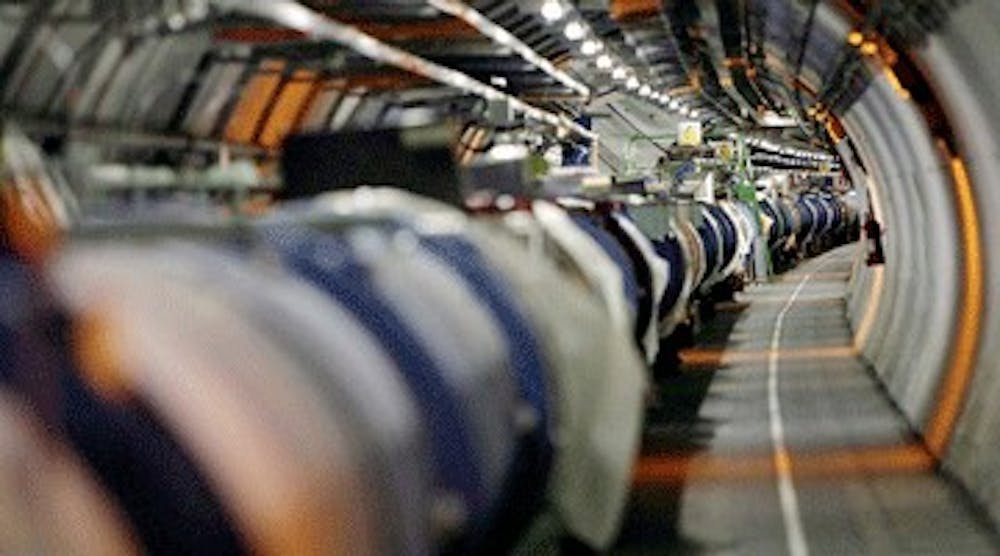
One Penn professor is in Switzerland today to test drive the largest particle accelerator ever built.
Physics professor Hugh "Brig" Williams traveled across the Atlantic to fine-tune Penn's contribution to the Large Hadron Collider.
The LHC is located at the European Organization for Nuclear Research laboratory near Geneva and is the world's highest-energy particle accelerator.
Today's test run will consist of running a continuous beam through the entire accelerator to make sure it is operational.
The structure is 17 miles long, rests 100 meters underground and requires an operating temperature of 2.7 degrees above absolute zero - or about -271 degrees Celsius. It uses a series of extremely powerful magnets to focus and direct beams of particles through supercooled tubes.
The collisions and interactions of such particles may lend insight to perennial physics questions about the nature of matter.
Construction of such a large apparatus required the expertise of about 8,000 scientists from institutions around the world, including Penn.
The Penn high energy physics group - a 23-person team of students and faculty - has been developing one portion of the experiment for 14 years: The ATLAS detector.
Using the detector, scientists will be able to see particles produced by the collision of two high-energy protons.
It will be capable of providing images of the 40 million proton collisions that occur every second within the collider.
"There's a theory that explains the difference between the weak nuclear force and the electromagnetic force, and the particle that explains that difference has not been seen," said Physics and Astronomy professor Evelyn Thomson.
If the particle does exist, she said, the detector will recognize it in this experiment.
Williams and Thomson lead the team that is working on the project, along with fellow Physics and Astronomy professors Elliot Lipeles and Joe Kroll.
Penn's involvement in the project began in 1994, when the ATLAS detector was first conceived in its current form. This detector alone required the input of about 2,000 physicists.
"It's extremely complex, with many subsystems and associated software," Williams said. "So it takes nearly this many physicists to complete all the construction, hardware, testing and software development that goes into each part."
Williams and his colleagues are preparing to conduct data on proton-proton collisions later this fall.
He said they expect to see major physics discoveries within the next two to three years.
University spokesman Jordan Reese said Penn is excited to be involved in "the largest experiment in history."
The Daily Pennsylvanian is an independent, student-run newspaper. Please consider making a donation to support the coverage that shapes the University. Your generosity ensures a future of strong journalism at Penn.
DonatePlease note All comments are eligible for publication in The Daily Pennsylvanian.





